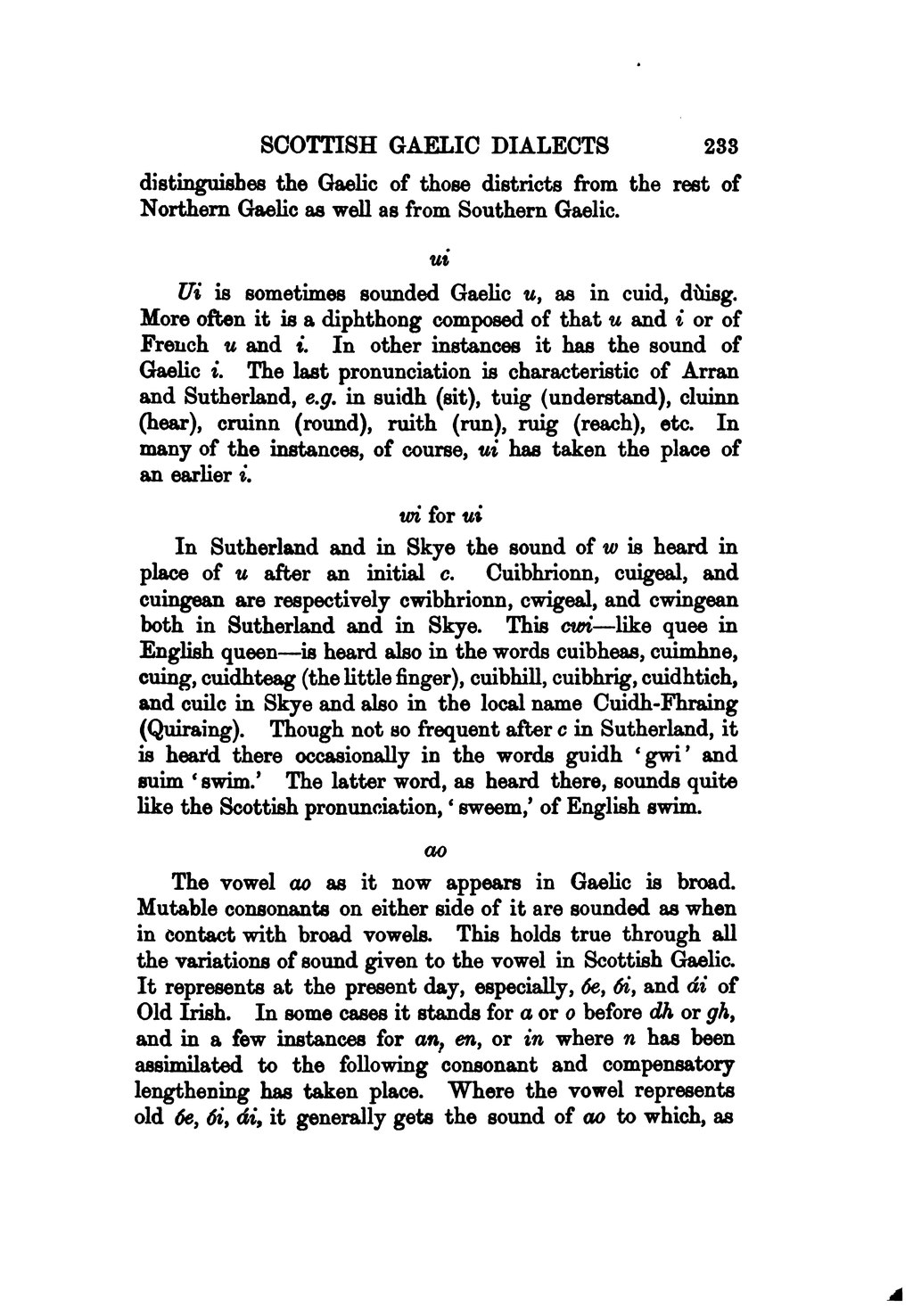distinguishes the Gaelic of those districts from the rest of Northern Gaelic as well as from Southern Gaelic.
ui
Ui is sometimes sounded Gaelic u, as in cuid, dùisg. More often it is a diphthong composed of that u and i or of French u and i. In other instances it has the sound of Gaelic i. The last pronunciation is characteristic of Arran and Sutherland, e.g. in suidh (sit), tuig (understand), cluinn (hear), cruinn (round), ruith (run), ruig (reach), etc. In many of the instances, of course, ui has taken the place of an earlier i.
wi for ui
In Sutherland and in Skye the sound of w is heard in place of u after an initial c. Cuibhrionn, cuigeal, and cuingean are respectively cwibhrionn, cwigeal, and cwingean both in Sutherland and in Skye. This cwi—like quee in English queen—is heard also in the words cuibheas, cuimhne, cuing, cuidhteag (the little finger), cuibhill, cuibhrig, cuidhtich, and cuilc in Skye and also in the local name Cuidh-Fhraing (Quiraing). Though not so frequent after c in Sutherland, it is heard there occasionally in the words guidh ‘gwi’ and suim ‘swim.’ The latter word, as heard there, sounds quite like the Scottish pronunciation, ‘sweem,’ of English swim.
ao
The vowel ao as it now appears in Gaelic is broad. Mutable consonants on either side of it are sounded as when in contact with broad vowels. This holds true through all the variations of sound given to the vowel in Scottish Gaelic. It represents at the present day, especially, óe, ói, and ái of Old Irish. In some cases it stands for a or o before dh or gh, and in a few instances for an, en, or in where n has been assimilated to the following consonant and compensatory lengthening has taken place. Where the vowel represents old óe, ói, ái, it generally gets the sound of ao to which, as
